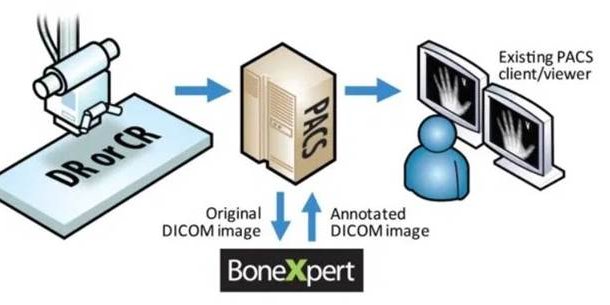
Company: Visiana Product: BoneXpert
Performance of two different artificial intelligence (AI) methods for assessing carpal bone age compared to the standard Greulich and Pyle method
La radiologia medica, 2024
Abstract
Purpose
Evaluate the agreement between bone age assessments conducted by two distinct machine learning system and standard Greulich and Pyle method.
Materials and methods
Carpal radiographs of 225 patients (mean age 8 years and 10 months, SD = 3 years and 1 month) were retrospectively analysed at two separate institutions (October 2018 and May 2022) by both expert radiologists and radiologists in training as well as by two distinct AI software programmes, 16-bit AItm and BoneXpert® in a blinded manner.
Results
The bone age range estimated by the 16-bit AItm system in our sample varied between 1 year and 1 month and 15 years and 8 months (mean bone age 9 years and 5 months SD = 3 years and 3 months). BoneXpert® estimated bone age ranged between 8 months and 15 years and 7 months (mean bone age 8 years and 11 months SD = 3 years and 3 months). The average bone age estimated by the Greulich and Pyle method was between 11 months and 14 years, 9 months (mean bone age 8 years and 4 months SD = 3 years and 3 months). Radiologists' assessments using the Greulich and Pyle method were significantly correlated (Pearson's r > 0.80, p < 0.001). There was no statistical difference between BoneXpert® and 16-bit AItm (mean difference = - 0.19, 95%CI = (- 0.45; 0.08)), and the agreement between two measurements varies between - 3.45 (95%CI = (- 3.95; - 3.03) and 3.07 (95%CI - 3.03; 3.57).
Conclusions
Both AI methods and GP provide correlated results, although the measurements made by AI were closer to each other compared to the GP method.
Read full study